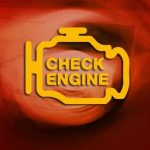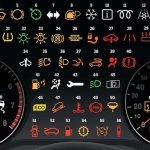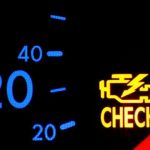In today’s technologically advanced world, vehicle diagnostics have become an indispensable part of ensuring optimal performance and maintenance. At the forefront of this revolution lies OBD2 (On-Board Diagnostics) interface, a powerful tool that allows us to understand our vehicles like never before. In this comprehensive guide, we delve deep into the intricacies of OBD2 interface, unraveling its key features and functionalities to empower both automotive enthusiasts and professionals alike.
From understanding fault codes and interpreting live data streams to diagnosing complex issues efficiently, join us as we navigate through the vast landscape of vehicular diagnostics with OBD2 as our guiding light. Get ready for a journey towards effective vehicle diagnostics – unveiling the true potential of your automobile!
Understanding OBD2 Interface: A Comprehensive Overview
What is OBD2 Interface?
OBD2 (On-Board Diagnostics) interface is a standardized system that allows access to a vehicle’s engine control unit (ECU). It provides real-time data and diagnostic information, which can be used for various purposes such as troubleshooting issues, monitoring performance, and conducting emissions tests. The OBD2 interface connects to the vehicle’s onboard computer via a diagnostic port located inside the car.
How Does OBD2 Interface Work?
The OBD2 interface communicates with the ECU through a set of protocols, including CAN (Controller Area Network) and K-Line. Information from sensors throughout the vehicle is collected by the ECU and transmitted to the OBD2 interface. This data can then be interpreted using specialized software or tools to diagnose any problems or monitor specific parameters like fuel efficiency or engine temperature.
Benefits of Using an OBD2 Interface
- Cost-effective diagnostics: The use of an OBD2 interface eliminates the need for expensive proprietary tools, making it more affordable for both professionals and DIY enthusiasts.
- Real-time data: By connecting to the ECU in real time, users can instantly access crucial information about their vehicle’s performance and identify potential issues early on.
- Emissions compliance: In many regions, regular emissions testing is mandatory for vehicles. An OBD2 interface enables easy monitoring of emission levels and helps ensure compliance with regulations.
- Enhanced maintenance: With detailed information about various subsystems in your vehicle available at your fingertips, you can stay proactive in maintaining its health, preventing costly repairs down the line.
Whether you’re an automotive professional or simply want to have better control over your vehicle’s well-being,
an understanding of how an ODB-II code reader works
can prove invaluable!
Decoding Fault Codes: Mastering the Language of OBD2
Understanding fault codes helps pinpoint vehicle issues
- Fault codes are numerical representations of specific problems detected by the OBD2 system.
- These codes provide valuable insights into various components and systems within a vehicle.
- By deciphering these codes, mechanics can determine the root cause of an issue quickly.
Reading and interpreting fault codes effectively
- Connect an OBD2 scanner to retrieve fault codes: A compatible scanner is necessary to extract trouble codes from a vehicle’s onboard computer system.
- Decode the code using reference materials or online databases: There are numerous resources available that can help identify potential problem areas based on specific fault code numbers.
- Familiarize yourself with common fault code definitions: Each digit in a fault code represents a different aspect of a vehicle’s condition, such as engine or transmission issues, fuel system problems, or sensor malfunctions.
Benefits of understanding and decoding OBD2 fault codes
- Saves time and money: Accurately diagnosing issues through decoded fault codes prevents unnecessary repairs, reducing costs for both mechanics and vehicle owners.
- Pinpoints hidden problems early on: Identifying minor faults before they become major failures can prevent extensive damage to critical components over time.
- Helps make informed decisions about maintenance and repairs: Knowledge gained from reading OBD2 fault codes allows for better decision-making when it comes to servicing vehicles efficiently.
Harnessing Live Data Streams: Real-Time Insights for Effective Diagnostics
- Real-time data collection: OBD2 interface allows for the collection of live data streams from various sensors and systems in a vehicle. This means that diagnostics can be performed while the vehicle is running, providing valuable real-time insights.
- Instant feedback on performance: By harnessing live data streams, mechanics and technicians can quickly assess a vehicle’s performance and identify any issues or abnormalities. This instant feedback enables faster troubleshooting and more efficient repairs.
- Improved accuracy in diagnostics: Live data streams offer a more accurate representation of a vehicle’s condition compared to traditional diagnostic methods that rely solely on self-reported codes. With up-to-date information, professionals can make better-informed decisions when diagnosing problems and recommending appropriate solutions.
In summary, using an OBD2 interface to harness live data streams provides real-time insights into a vehicle’s performance. These insights not only allow for quicker identification of issues but also enhance the overall accuracy of diagnostics, leading to more effective repairs.
Advanced Diagnostics Made Easy: Exploring OBD2 Software and Tools
With the advancement of technology, diagnosing vehicle issues has become easier and more efficient. One key tool in this process is the OBD2 interface, which allows for seamless communication between a car’s computer system and external devices.
OBD2 software plays a vital role in unlocking the full potential of this interface. These programs provide access to real-time data from various sensors within a vehicle, allowing mechanics and enthusiasts alike to monitor performance, identify problems, and make informed decisions for repairs.
To optimize your diagnostics experience, it’s crucial to choose reliable OBD2 software that matches your requirements. Look for user-friendly interfaces with intuitive navigation features. Additionally, ensure compatibility with your vehicle’s make and model to avoid any compatibility issues or limitations.
Choosing the Right OBD2 Scanner: A Buyer’s Guide
When it comes to selecting the right OBD2 scanner for your vehicle, there are a few key factors to consider. Here are some tips to help you make an informed decision:
- Purpose: Determine the primary purpose of investing in an OBD2 scanner. Are you an avid car enthusiast or a professional mechanic? Or do you simply want a basic tool for occasional DIY diagnostics?
- Compatibility: Ensure that the scanner is compatible with your vehicle’s make and model. Compatibility can vary, so it’s essential to check before purchasing.
- Functionality: Consider what features are important to you. Do you need live data streaming or advanced diagnostic capabilities? Make sure the scanner has all necessary functions.
Remember, choosing the right OBD2 scanner will ensure accurate and efficient vehicle diagnostics, saving time and money in repairs. Research thoroughly and select one that suits your specific needs and budget
Unlocking the Potential: Maximizing the Benefits of OBD2 Adapter and Diagnostic Equipment
Why Use an OBD2 Adapter?
OBD2 adapters serve as a vital tool for effective vehicle diagnostics. By connecting to your car’s onboard diagnostic system, these adapters provide you with valuable information about your vehicle’s performance and any potential issues it may be experiencing. With this knowledge, you can make informed decisions on maintenance and repairs.
Getting Started with OBD2 Diagnostic Equipment
To unlock the full benefits of OBD2 diagnostic equipment, follow these steps:
- Choose the Right Device: Select an adapter that is compatible with your vehicle’s make and model.
- Tip: Ensure that it supports the appropriate communication protocol (such as CAN or J1850) used by your car.
- Connect and Communicate: Plug in the adapter into your car’s OBD port (usually located under the dashboard), then pair it with a compatible mobile app or computer software for communication.
- Read Vehicle Data: Once connected, use the app/software to access various data parameters from your vehicle, such as engine RPM, fuel efficiency, trouble codes, and more.
- Interpret Results Correctly: Understand what each parameter signifies by referring to resources like code libraries or consulting a mechanic/automotive expert if needed.
By mastering these steps and investing in quality OBD2 diagnostic equipment (like scanners or code readers), drivers can successfully diagnose their vehicles’ problems before they worsen—saving time, money, and ensuring optimal safety on the road ahead.




